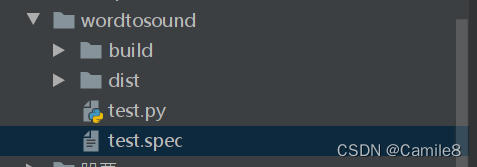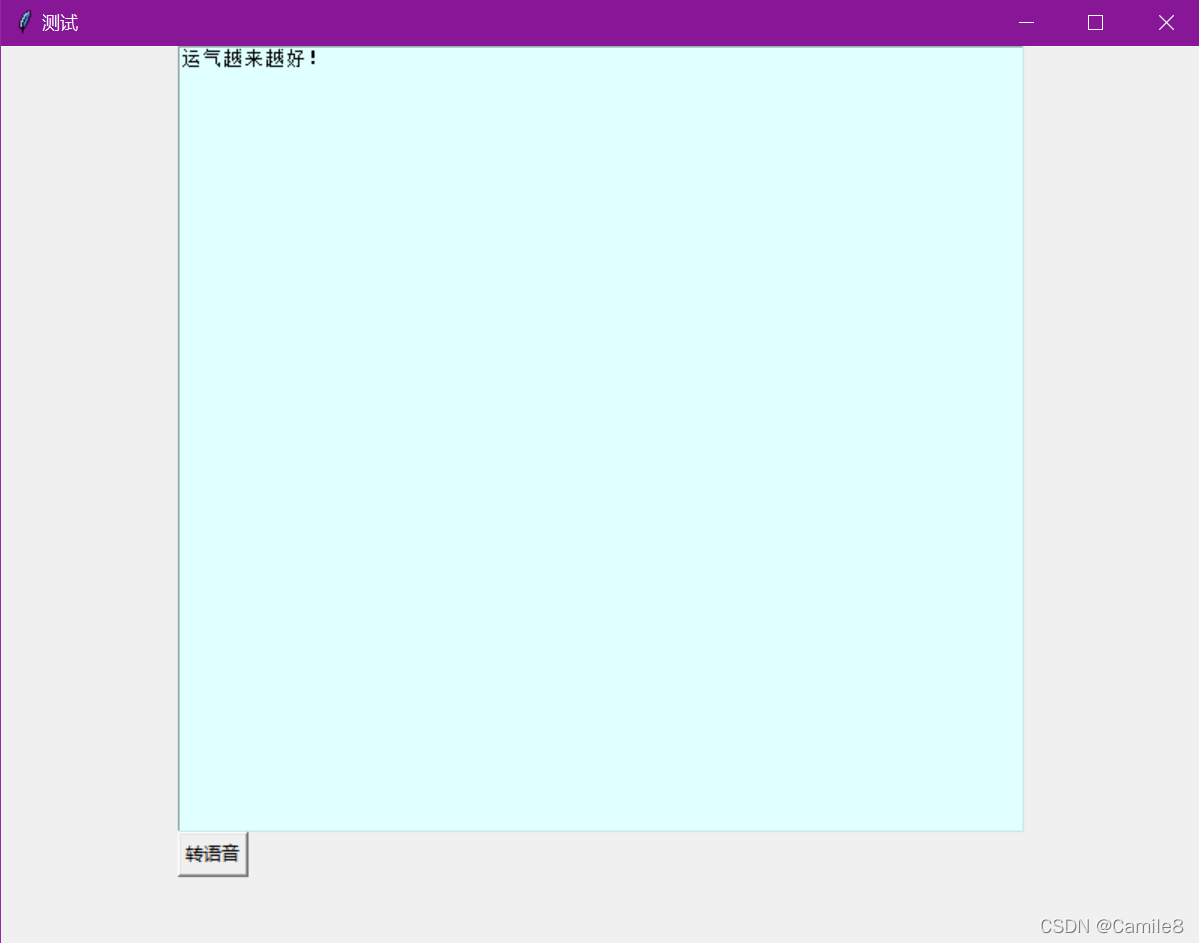基于Python编写简易文字语音转换器
话不多说上代码!源代码
from tkinter import *
import pyttsx3
class Application(Frame):
def __init__(self,master=None):
super().__init__(master)
self.master = master
self.pack()
self.creatWidget()
# BING INPUT
def creatWidget(self):
self.w1 = Text(self, width=80, heigh=40, bg='lightcyan') # 宽度为80个字母(40个汉字),高度为1个行高
self.w1.pack()
Button(self, text="转语音", command=self.returnText).pack(side="left")
# 返回信息
def returnText(self):
# Indexes(索引):用来指向Text组件中文本的位置,Text的组件索引也是对应实际字符之间的位置
# 行号以1开始,列号以0开始
result=self.w1.get(1.0, END)
# print("所有文本内容:\n", result)
# messagebox.showinfo("所有的文本", self.w1.get(1.0, END))
engine = pyttsx3.init()
engine.say(result)
engine.runAndWait()
if __name__ == '__main__':
root = Tk()
root.geometry("800x600+10+10")
root.title("测试")
app = Application(root)
root.mainloop()
用来打包的文件

# -*- mode: python ; coding: utf-8 -*-
block_cipher = None
a = Analysis(['test.py'],
pathex=[],
binaries=[],
datas=[],
hiddenimports=[],
hookspath=[],
hooksconfig={},
runtime_hooks=[],
excludes=[],
win_no_prefer_redirects=False,
win_private_assemblies=False,
cipher=block_cipher,
noarchive=False)
pyz = PYZ(a.pure, a.zipped_data,
cipher=block_cipher)
exe = EXE(pyz,
a.scripts,
a.binaries,
a.zipfiles,
a.datas,
[],
name='test',
debug=False,
bootloader_ignore_signals=False,
strip=False,
upx=True,
upx_exclude=[],
runtime_tmpdir=None,
console=True,
disable_windowed_traceback=False,
target_arch=None,
codesign_identity=None,
entitlements_file=None )
效果展示

关于基于Python编写简易文字语音转换器的文章就介绍至此,更多相关Python文字语音转换内容请搜索编程教程以前的文章,希望以后支持编程教程!
1.引言我们之前已经介绍了神经网络的基本知识,神经网络的主要作用就是预测与分类,现在让我们来搭建第一个用于拟合回归的神经网络吧。 2.神经网络搭建2.1 准备工 ...
